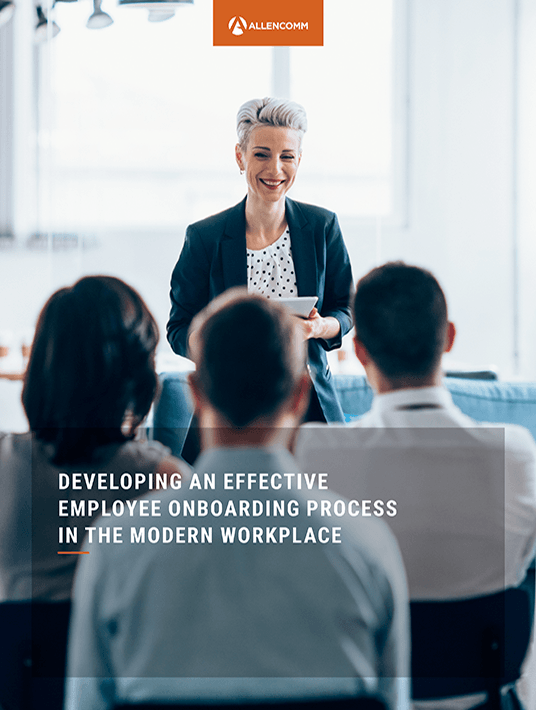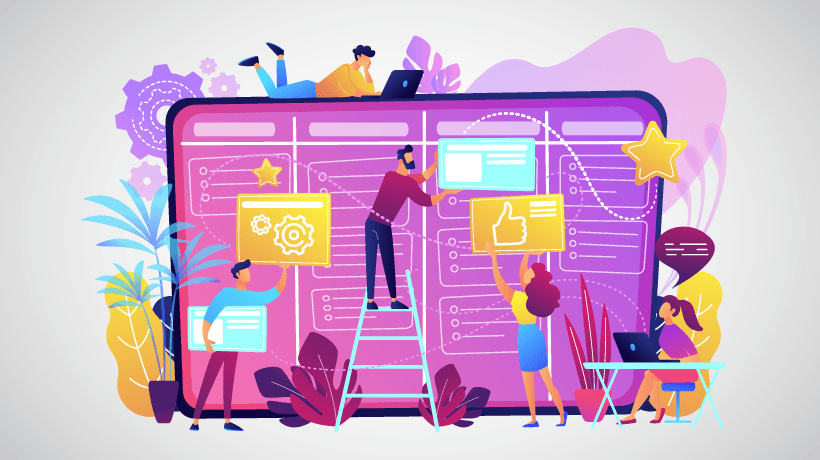Increasing ROI With Employee Onboarding
What does your employee onboarding process look like? When was the last time it changed? As corporate training continues to evolve, L&D leaders need to ask themselves these questions. If your training hasn't changed much in the past few years, then chances are it won't resonate with your audience. Worse yet, it's likely costing your company time and money.

The Center for American Progress found that turnover costs roughly 21% of an employee's annual salary [1]. Moreover, 25% of employees leave in their first year [2], and 20% of those employees leave in the first 45 days. With such high rates of turnover, employee onboarding is the best place to look for opportunities to improve training ROI. Your learning experiences need to be aligned with the needs of incoming learners. So, what can you do to improve employee retention and training outcomes?
Here are 4 tips to increase training ROI with employee onboarding.
1. Preboarding
Traditionally, the employee experience starts with a meet and greet, handing over a company handbook, and asking the IT team to set up a workstation. But this approach misses a critical step in corporate indoctrination: creating connections. New hires need to become immersed in their social landscape. That might include meeting their HR contact, leadership or different departments, as well as connecting to social media, training cohorts, and mentors. If new hires feel more connected and engaged with their peers, then they are more likely to stay with a company.
Time Magazine reported that people who met in person showed the most trust and most effective cooperation, compared to email interactions [3]. How much of your preboarding process is automated? You may want to try adding more of a human touch to those initial conversations. For example, an introduction in the breakroom will have much more impact than a company-wide welcome email.
2. Modern Training Technology
Modern learners expect an employee onboarding experience that mirrors their recreational technology. But, more importantly, training technology can increase engagement and improve training outcomes. A Harvard professor found interactive training technology, such as crowd-sourcing group answers on an app, doubled the learning gains [4]. In fact, it tripled when the answers were more relevant. Highly interactive training modules can empower learners to meet their goals, but it comes down to integrating technology with best practices in training.
3. Employee-Centric Onboarding
New hires bring unique strengths and personalities to your company. Likely, that's why you hired them. But traditional corporate culture indoctrination actually stifles creativity and creates a dissonance that leads to employee turnover [5]. Research shows it's better to celebrate the unique abilities of your new hires instead. For instance, an IT call center found that shifting the focus of onboarding from company values to individual values increased employee retention by 32% over 6 months [6]. However, this doesn't mean you should throw out company culture altogether. It's best to show new hires how their individual skills will make them more successful in their role.
4. Measuring Training Impact
The Brandon Hall Group found that only 3% of L&D teams are able to measure the impact of their training at Kirkpatric Level 4 [7]. But without measuring "targeted outcomes as a result of training and subsequent reinforcement," you can't know if training had an impact on the underlying business goal. Most L&D teams are measuring the impact of their training in terms of learner responses. Unfortunately, "reacting favorably" to a learning experience won't tell us much about learning outcomes. It's important that learners enjoy their experience. There are obvious benefits to engagement and course completion. But, it's much harder to show ROI without data on performance improvement.
That being said, there's still a small percentage of L&D teams measuring learning outcomes. So, what are they doing differently? Other than having more time and budget, the most effective way to measure training is to design behavior-based training goals around well-established KPIs. If your company is already tracking performance (e.g., sales, compliance violations, quality control, customer service complaints), then your pre-test data has already been gathered. Conduct post-tests to determine if there has been any change after training completion, and that should give you an idea of training ROI.
5. Taking It All In
Improving the employee onboarding experience can decrease turnover, increase knowledge retention and employee engagement. But the corporate training landscape is quickly changing. So, in order to really improve your training ROI, you have to design modern training that aligns with the technology and values of your incoming learners. Be sure not to get left behind. For more insight into employee onboarding innovations for the modern workforce, download the eBook Developing An Effective Employee Onboarding Process In The Modern Workplace.
References:
[1] There Are Significant Business Costs to Replacing Employees
[2] Infographic] The Onboarding New Hire Statistics You Need to Know (with 2018 Updates)
[3] Why E-Mail May Be Hurting Off-Line Relationships
[4] The Benefit of Interactive Learning
[5] Reinventing Employee Onboarding
[6] Extreme Onboarding: How to WOW Your New Hires Rather Than Numb Them
[7] Learning Measurement 2019—Kirkpatrick Measurement Levels


